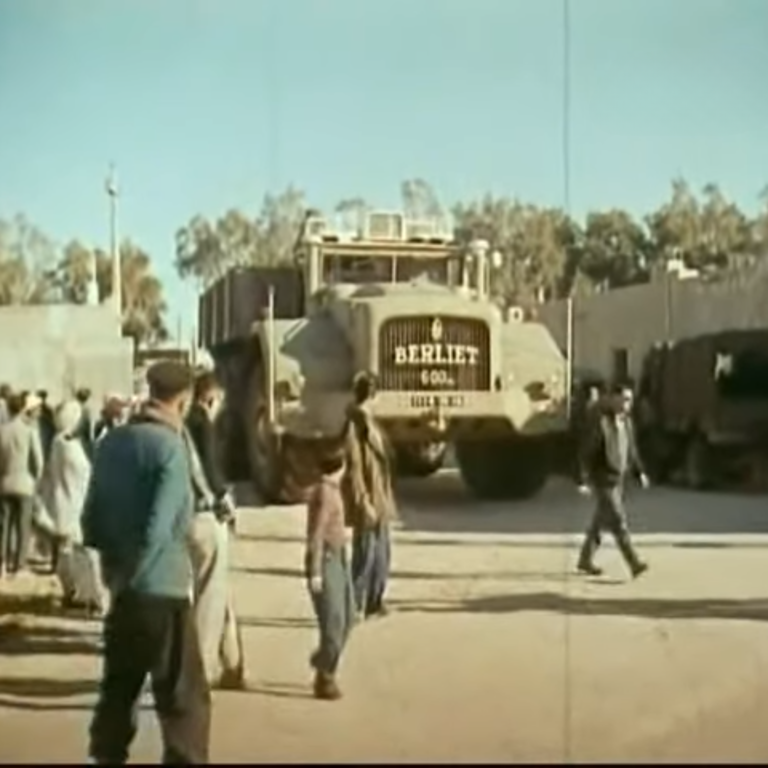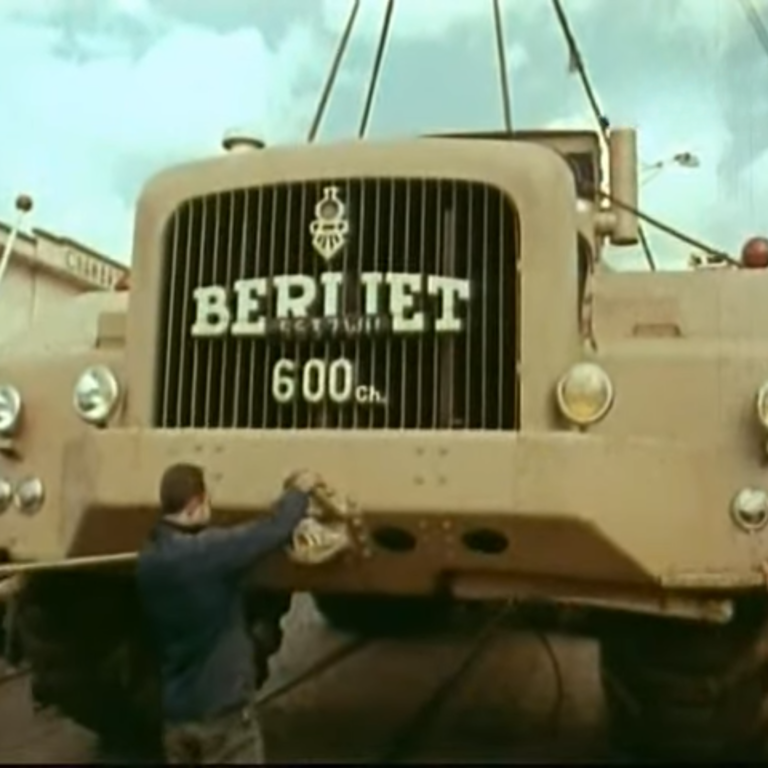With the ability to transport up to 50 tons of cargo through the challenging sand dunes, the T100 stood out in the Sahara's oil exploration.
In the 1950s, France initiated oil exploration in the Sahara Desert, in what is now Algeria. Leading these expeditions, the need arose to create one of the most impressive vehicles of the time: the Berliet T100. With exceptional capabilities to traverse difficult terrains, the Berliet T100, also known as the “desert giant,“ became a symbol of engineering and audacity, standing out as a remarkable technological achievement in oil exploration.
In 1956, Shell invited the renowned truck manufacturer, Paul Berliet, to explore the feasibility of oil extraction in the Sahara Desert. After evaluating the geography and realizing the impracticality of building asphalt roads, Berliet decided to tackle the challenge by creating a specific vehicle. Thus, the development of the Berliet T100 began.
Engineers working on the production, in collaboration with Michelin, designed specially large tires, marking the first step in the creation of this giant. In October 1957, the Berliet T100 came to life. With the ability to transport up to 50 tons of cargo through the challenging sand dunes, the T100 stood out as a unique solution.

Berliet T100, the Desert Giant
This 103-ton vehicle had an imposing presence and dimensions of 15.30 meters in length and almost 4.5 meters in height, earning it the nickname “desert giant.” Additionally, the T100 was equipped with six wheels, each weighing 1,000 kilograms, and a V12 turbo-diesel engine with 29.6 liters and 600 HP from Cummins, providing exceptional power.
The Berliet T100, initially conceived for oil exploration in Algeria, quickly became an icon in vehicular engineering, demonstrating the capacity of innovation to overcome extreme challenges.
Despite its amazing specifications, only four units of this colossal truck were produced. The first unit, tested in Algeria, demonstrated impressive performance by easily reaching 700 HP. This success encouraged Berliet to manufacture the second T100.
The third unit, commissioned by France, was modified with 10 wheels, adapting it for use in a mine. The fourth and final unit had a cabin over the engine and was sent to the United States for promotional purposes and attracting new customers. Unfortunately, this strategy resulted in failure, contrasting with the previous successes of the T100. Despite its short production run, the Berliet T100 is still remembered as an extraordinary achievement in off-road vehicle engineering.

End of the Berliet T100
In 1962, with Algeria gaining independence from France, the era of oil exploration in the country came to an end, marking the twilight of the Berliet T100. Berliet made the decision to cancel the project in the same year, bringing to a close the existence of one of the largest and most powerful trucks to ever roam the earth. This closure symbolized the end of a prominent era in the history of vehicular engineering, leaving the Berliet T100 as a testament to audacity and technical skill in exploring inhospitable terrains.

The story of the first car race in Paris: a historic hit in 1894
Paris stands not only as a cultural and artistic epicenter but also as a pioneer in car racing In the history of automotive racing, Paris

Top states for driving in the United States in 2024
A WalletHub study compared all 50 states to determine the best driving conditions Road safety and quality are central concerns for drivers. And while the

Briefs: marijuana reclassification, vehicle fees, and climate grants
The trucking industry goes through new legislation, taxes and subsidies Questions about the proposed reclassification of marijuana The Owner-Operator Independent Drivers Association (OOIDA) supports the

Impact of traffic pollution: study reveals increase in blood pressure
A study from the University of Washington in Seattle reveals that the main cause of significant increases in blood pressure might be traffic-related gasses A

The benefits and careers of a Commercial Driver’s License
Having a CDL opens multiple doors within the trucking and transportation industry Having a Commercial Driver’s License (CDL) opens multiple doors within the trucking industry,

Sharing the road with a truck: steps to ensure your safety
Caution around blind spots and anticipating truck maneuvers are essential to ensuring everyone’s safety Truck drivers face significant challenges on the road due to their
